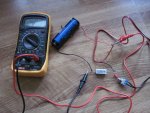IsaacT
0
- Joined
- Aug 25, 2010
- Messages
- 5,950
- Points
- 83
This may be a necro post, but this is kind of a sticky so meh :/ I'll go for it and ask forgiveness later.
1. Is there a certain point at which I should throw my batteries away very swiftly and with no regret? And by throw away I mean take to have disposed of in a manner befitting of the nature of LiIon Batteries.
2. Will a 10Ohm resistor work? Thats all I have, and radioshack keeps wanting all my money for resistors. Like "That'll be 3 bucks for ONE resistor".
3. Is it dangerous to keep cells that have a certain level of IR?
Thanks,
Isaac
1. Is there a certain point at which I should throw my batteries away very swiftly and with no regret? And by throw away I mean take to have disposed of in a manner befitting of the nature of LiIon Batteries.
2. Will a 10Ohm resistor work? Thats all I have, and radioshack keeps wanting all my money for resistors. Like "That'll be 3 bucks for ONE resistor".
3. Is it dangerous to keep cells that have a certain level of IR?
Thanks,
Isaac





